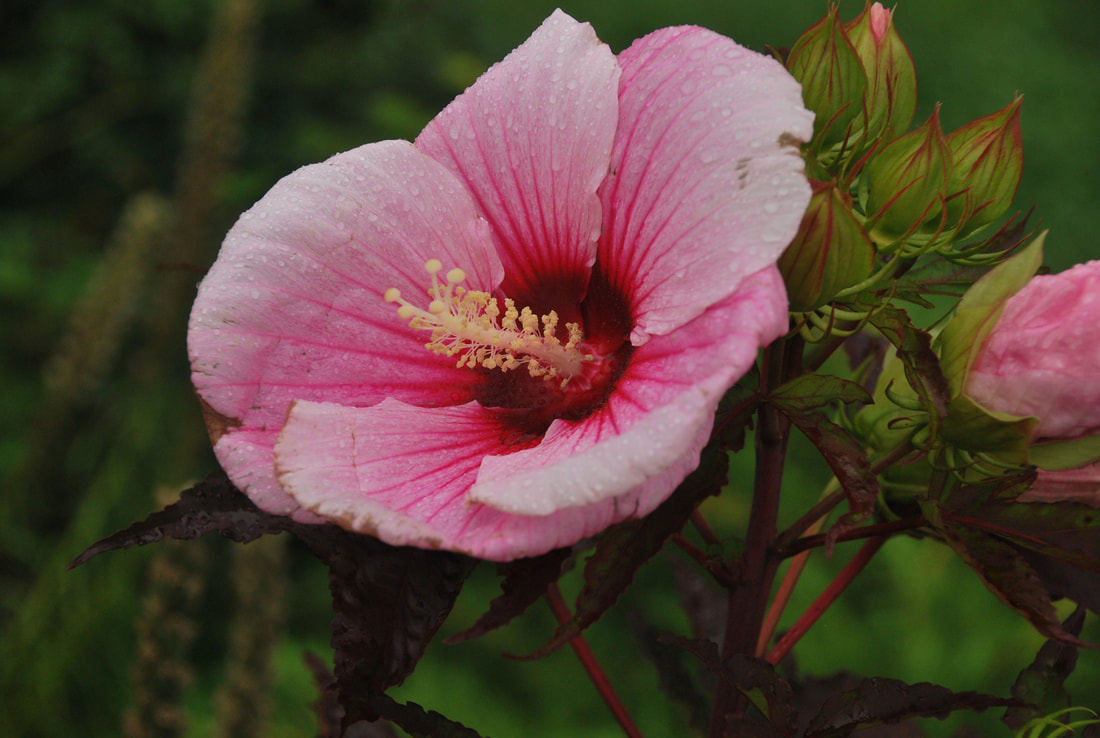|
Yes, a Hardy Hibiscus is capable of surviving temperatures as low as minus 30 degrees. [Not to be confused with a Shrub or Tropical Hibiscus plant (native to Asia), the Hardy Hibiscus are hybrids, primarily traced back to the native North America species Hibiscus moscheutos.
Hardy Hibiscus comes in shades of white, pink, red and yellow, with different eye patterns and streaking through the petals. Its leaf color also varies from green to bronze and near-black. Growing naturally in wetlands and along riverbanks throughout the Midwest and East Coast—even into Texas and Florida, this water-tolerant characteristic makes them perfect for areas of the garden that periodically flood or in rain gardens. The Hardy Hibiscus needs full sun and consistent watering. If in too much shade, its branches stretch and flop, while buds, flower performance and foliage colors decrease. If it loses its lowest leaves or aborts buds, you may need to up the water. Characteristically, the Hardy Hibiscus dies back to the ground each year and breaks dormancy later in the spring—even the end of May, depending on the year. Consider planting it with spring-blooming bulbs which will be out of bloom when the Hibiscus is ready to emerge. When planting a Hibiscus, be sure to give it plenty of space to grow. A mature plant can get 5-6′ wide and grow quickly during the year. If you take a week’s summer vacation, you’re likely to come back to a plant twice the size you left it! Submitted by: Vickie Gee-Treft, UW-Extension Master Gardener Volunteer Credit to https://ngb.org/year-of-the-hardy-hibiscus/
0 Comments
Leave a Reply. |
|
| North Country MGV | gARDEN bLOGS |
Location |
|

 RSS Feed
RSS Feed